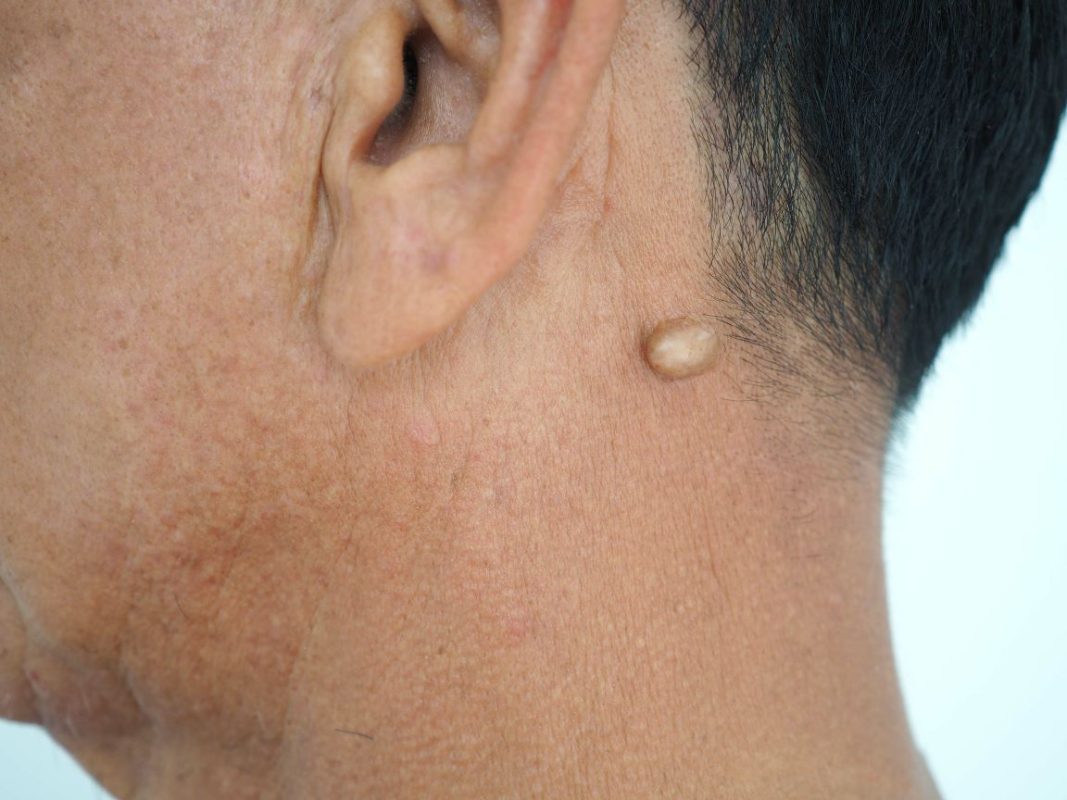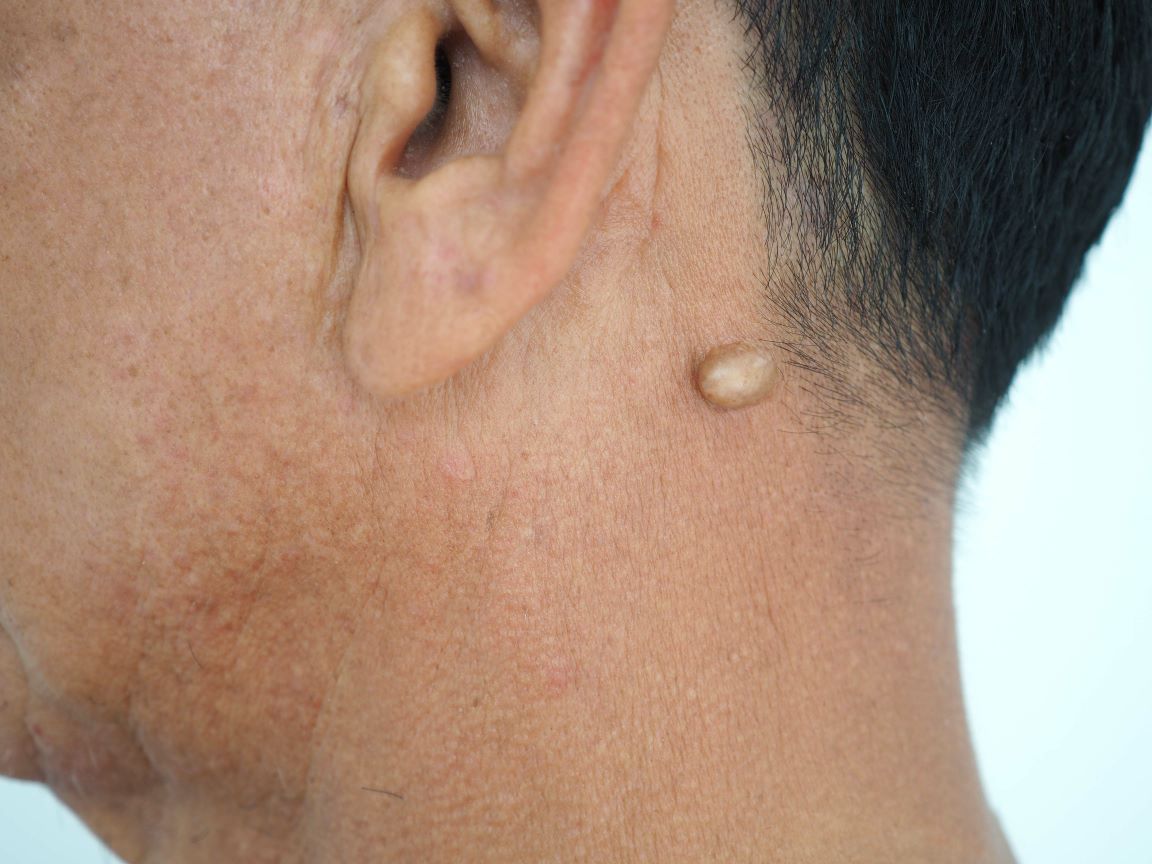Homeopathic Treatments for Cysts
Introduction
Homeopathic Treatments for Cysts. A cyst is a closed sac-like structure, typically filled with fluid, semi-solid material, or gas. Cysts can form in any part of the body and are often benign, but depending on their size, location, or cause, they may cause pain, inflammation, or pressure on nearby tissues. Common types include sebaceous cysts, ovarian cysts, breast cysts, ganglion cysts, Baker’s cysts, and dermoid cysts.
While conventional treatments for cysts often involve surgical removal or corticosteroid injections, homeopathy provides a non-invasive, gentle, and effective approach to treating various types of cysts. Homeopathic remedies stimulate the body’s innate healing mechanism to absorb, reduce, or dissolve cystic formations naturally, without side effects.
This article explores the homeopathic understanding of cysts, commonly used remedies for different types of cysts, case-specific treatments, constitutional approaches, and lifestyle advice for managing and preventing cysts.

What Are Cysts?
Cysts are abnormal growths or sacs that can appear anywhere in the body. They can vary in size from microscopic to several centimeters in diameter. Most cysts are non-cancerous (benign), but some may become infected, rupture, or affect organ function.
Types of Cysts Commonly Treated with Homeopathy
- Sebaceous Cysts – Develop from blocked sebaceous glands, typically under the skin
- Ovarian Cysts – Fluid-filled sacs within or on the surface of ovaries
- Breast Cysts – Fluid-filled sacs in the breast tissue, often painful
- Ganglion Cysts – Non-cancerous lumps usually on the wrist or hand joints
- Baker’s Cysts – Behind the knee joint, often due to arthritis
- Pilonidal Cysts – Near the tailbone, sometimes filled with pus or hair
- Dental or Jaw Cysts – Form in the jaw or gums
- Renal or Kidney Cysts – Fluid-filled sacs in the kidneys
- Dermoid Cysts – Congenital, containing skin, hair, or teeth
Causes of Cysts (Etiology)
- Blocked ducts or glands (e.g., sebaceous or Bartholin’s glands)
- Hormonal imbalances (especially in ovarian cysts)
- Infections or inflammation
- Trauma or injury
- Genetic predisposition
- Chronic skin conditions like acne
- Autoimmune disorders
Symptoms of Cysts
- Visible or palpable lump
- Pain or tenderness
- Swelling or inflammation
- Redness or warmth (in case of infection)
- Pressure or discomfort (especially with internal cysts)
- Menstrual irregularities (in ovarian cysts)
- Restricted mobility (e.g., in ganglion or Baker’s cysts)
Homeopathic View of Cysts
Homeopathy treats cysts as manifestations of internal imbalance, not just isolated growths. Each individual is assessed for:
- Constitutional make-up (physical and emotional traits)
- Causative factors (e.g., hormonal, emotional, lifestyle)
- Associated symptoms (pain, discharge, location)
- Family history of cysts or glandular problems
Homeopathy aims to dissolve existing cysts, prevent recurrence, and treat the root cause, especially in chronic or recurring cases.
Top Homeopathic Remedies for Cysts
1. Calcarea Fluorica
Indicated for: Hard, stony cysts or nodules
- Glandular swellings or bony cysts
- Ovarian and breast cysts with hard consistency
- Ganglion cysts on wrists or fingers
- Cysts with slow growth and minimal symptoms
Dosage: 6X or 12X, 2–3 times daily for several weeks or months
2. Silicea (Silica)
Indicated for: Soft cysts with pus formation or risk of infection
- Cysts that tend to suppurate or become painful
- Pilonidal, sebaceous, or dental cysts
- Weak immune system, tendency to boil or abscess formation
- Promotes expulsion or resorption of cystic material
Dosage: 6X, 30C, or 200C based on individual case
3. Thuja Occidentalis
Indicated for: Cysts caused by glandular disorders, suppressed skin eruptions, or after vaccination
- Sebaceous cysts, warts, and oily skin
- Ovarian cysts, especially left-sided
- Recurrent cystic growths with foul-smelling discharge
- Suited to individuals with a “sycotic” miasm (chronic tendency to overgrowths)
Dosage: 30C to 200C, often once daily or weekly
4. Lycopodium Clavatum
Indicated for: Right-sided cysts and ovarian cysts
- Ovarian cysts with bloating and digestive troubles
- Cysts that cause pain or heaviness before menstruation
- Emotional symptoms like irritability, lack of confidence
- Chronic constipation, gas, or liver issues associated
Dosage: 30C to 200C, depending on constitutional analysis
5. Apis Mellifica
Indicated for: Cysts with redness, swelling, and stinging pains
- Painful ovarian or breast cysts
- Heat and burning sensation in the affected area
- Aggravation from warmth, relieved by cold applications
- Scanty or suppressed urination and edema may be present
Dosage: 30C, 3 times daily in acute inflammation
6. Hepar Sulphuris Calcareum
Indicated for: Infected or painful cysts
- Suppurating sebaceous or pilonidal cysts
- Sensitive to cold and touch
- Tendency to abscess formation
- Promotes drainage and resolution of pus
Dosage: 30C or 200C, 1–2 times daily in painful cases
7. Conium Maculatum
Indicated for: Hard glandular swellings and breast cysts
- Breast nodules or lumps in women
- Ovarian cysts in older or menopausal women
- Suited to people who are emotionally withdrawn, melancholic
- Pain or discomfort aggravated by touch and movement
Dosage: 30C or 200C, once daily or weekly
8. Lachesis Mutus
Indicated for: Left-sided ovarian cysts
- Intense pain before menses
- Menses are profuse and long-lasting
- Cysts that worsen with heat or pressure
- Sensation of constriction around abdomen or waist
Dosage: 200C or 1M potency, under professional supervision
9. Phosphorus
Indicated for: Soft cysts in delicate individuals
- Breast cysts with bleeding tendencies
- Anxiety, thirst for cold drinks, and exhaustion
- Suited to tall, thin, sensitive patients
Dosage: 30C or 200C, once or twice weekly
Homeopathic Approach to Specific Cyst Types
1. Sebaceous Cysts
- Silicea – To encourage drainage or resorption
- Hepar Sulph – If painful or infected
- Thuja – For recurrent cases or after suppression
2. Ovarian Cysts
- Lycopodium – Right-sided, bloating, irregular menses
- Lachesis – Left-sided, aggravated before periods
- Apis – Painful, inflamed ovarian cysts
- Thuja – Chronic or recurrent ovarian cysts
3. Breast Cysts (Fibroadenoma)
- Conium – Hard, immovable lumps
- Phytolacca – Painful, tender lumps
- Calcarea Fluor – Hard cystic nodules
- Silicea – Suppurating or tender cysts
4. Ganglion Cysts
- Calcarea Fluorica – Best remedy for firm cysts on tendons
- Silicea – Promotes absorption
- Thuja – Recurrent ganglions
5. Pilonidal Cysts
- Silicea – For discharge of pus, promotes healing
- Hepar Sulph – For infected, painful cases
- Calcarea Sulph – To promote clean pus drainage
Constitutional Treatment in Homeopathy
While acute remedies are helpful, chronic or recurrent cysts require constitutional remedies prescribed after a full analysis of the individual’s:
- Physical traits
- Emotional makeup
- Family history
- Susceptibilities
- Past illnesses
Examples of constitutional remedies include:
- Calcarea Carb – Cold, overweight, sweaty individuals prone to glandular swellings
- Sulphur – Itchy skin, heat aggravation, philosophical nature
- Natrum Mur – Reserved individuals with history of grief
- Pulsatilla – Timid, weepy, hormonal imbalance-related cysts
- Sepia – Women with uterine or ovarian disorders, indifferent disposition
Note: These remedies must be prescribed by a professional homeopath.
Supporting Remedies and Tissue Salts
Biochemic Tissue Remedies
- Calcarea Fluorica 6X – Hard swellings, fibrous growths
- Silicea 6X – Promotes absorption and healing
- Calcarea Sulphurica 6X – For discharge and infection
These can be safely used alongside constitutional treatment.
Lifestyle and Diet Tips
- Maintain a healthy hormonal balance through diet and exercise
- Avoid excessive intake of dairy, sugar, and processed food
- Stay hydrated
- Regularly monitor known cysts via ultrasound if necessary
- Avoid suppressive treatments like unnecessary surgery or steroids
- Manage stress through yoga or meditation
When to Seek Medical Attention
While homeopathy is effective for most benign cysts, immediate conventional care is essential if:
- Rapid growth or changes in the cyst
- Severe pain or signs of rupture
- Suspicion of malignancy (especially in ovarian or breast cysts)
- Fever or spreading infection
Homeopathy can still be used adjunctively in these cases.
Scientific Evidence and Case Studies
While large-scale RCTs are limited, there is anecdotal and case-based evidence supporting homeopathy for cysts:
- Case reports of ovarian cysts resolving with Lycopodium, Apis, and Lachesis
- Sebaceous cysts disappearing with Silicea and Thuja
- A 2020 observational study showed positive outcomes in breast nodules using individualized homeopathic treatment
Conclusion
Cysts are common, varied in type, and often benign — but they can be uncomfortable or recurrent. Homeopathic treatment offers a natural, non-invasive, and individualized approach to managing cysts. With remedies like Silicea, Calcarea Fluorica, Thuja, and Conium, homeopathy can help dissolve, drain, or heal cysts and prevent their recurrence by correcting internal imbalances.
For chronic or complex cysts, constitutional homeopathy is essential for long-term cure. Patients are encouraged to consult a qualified homeopath who can consider the totality of symptoms and prescribe the right remedy.
Keyword for Google search:
- Homeopathic Treatments for Cysts in Kolkata.
- Homeopathic Treatments for Cysts in Delhi.
- Homeopathy Treatments for Cysts in Mumbai.
- Homeopathic Treatments for Cysts in West Bengal.
- Homeopathic Treatments for Cysts in Jalpaiguri.
- Homeopathic Treatments for Cysts in Channei.
- Best Homeopathic Treatments for Cysts
- Top Homeopathic Treatments for Cysts
- Pure Homeopathic Treatments for Cysts
- Genuine Homeopathic Treatments for Cysts
- Homeopathic Treatments for Cysts in Siliguri.
- Homeopathic Treatments for Cysts in India.
- Homeopathic Treatments for Cysts
- Homeopathy Treatments for Cysts
- Homeopathic Treatments for Cysts in USA




